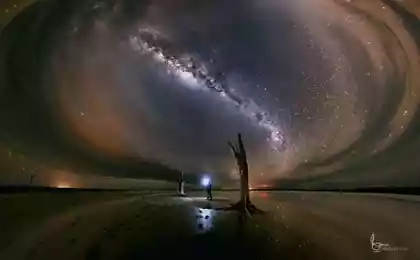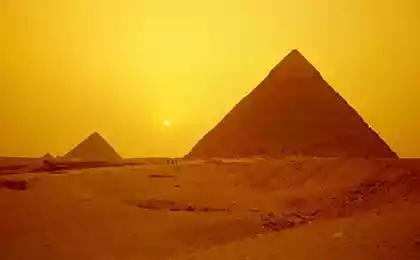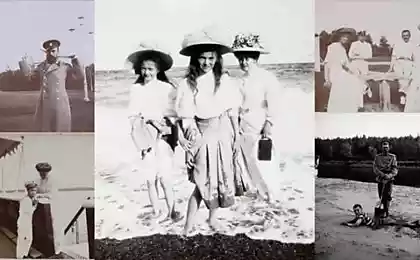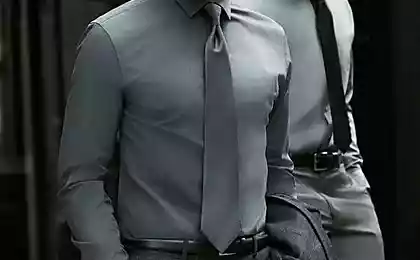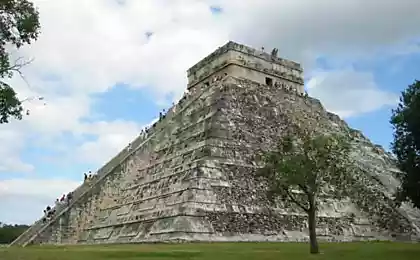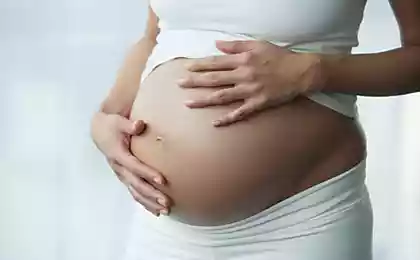1601
Great civilizations
History of mankind can be compared with the biography of the same family - over time some members of the household go, others are born, and every living life in their own way, leaving certain memories about themselves. In the case of a global "family» homo sapiens as its members serve entire civilizations - some of them manage to survive for thousands of years, and some people are not given a stretch and a few centuries, but anyway, place the lost civilization immediately takes the next - in This is the great justice, and great sense of history.

1. Olmec civilization
The Olmecs - one of the oldest civilizations of Central America, with an outstanding culture and unusually high for that time the level of development of science and technology.
"Card" are considered Olmec giant sculpture in the form of heads, located in modern Mexico. The flowering of Olmec States fell on the period between 1500 m and 400-m years BC, according to historians, this nation has achieved impressive success in architecture, agriculture, medicine, literature and other fields of knowledge. In Olmec had a pretty accurate calendar and a mathematical system in which the digits are "0", which can be considered a breakthrough.
Having existed for over a thousand years, the Olmec civilization for unclear reasons still declined, but on its ruins have other states, such as ...
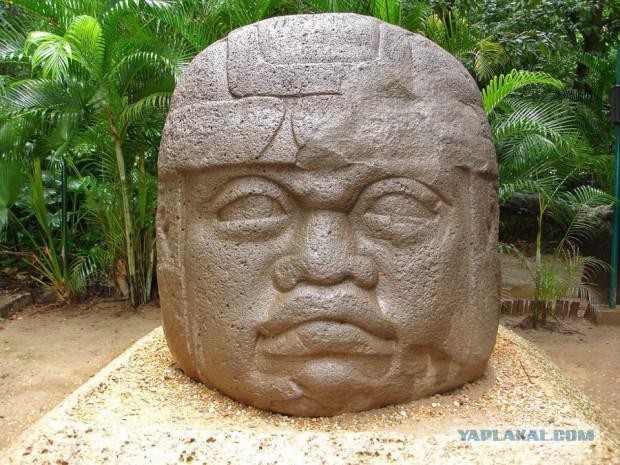
2. Aztec Empire
"Golden age" of the Aztec civilization is the period between the 1428th and 1521st years - at this time the empire covers a huge territory, where, according to some estimates, about 5 million people, while the population of its capital, Tenochtitlan, was situated on the site of the modern Mexico City is about 200 thousand.
Aztecs much borrowed from the Olmec civilization, including - religious beliefs, ritual games, traditions of human sacrifice, language, calendar, and some of the achievements of science and culture. The Aztec Empire was one of the richest and most highly developed countries of pre-Columbian America - enough to mention even the most complex of them built the aqueduct, intended for irrigation of the famous floating gardens.
With the exclusion of the Aztec state from the rest of the world, and along with the state itself, was over, when the detachment of Spanish conquistador Hernan Cortes was allowed entry into Tenochtitlan. You can imagine the surprise of the Spaniards, is expected to meet with the "primitive barbarians" - their eyes appeared a huge rich city with wide streets and a stunningly beautiful architecture.
Probably, greed, envy Spaniards to wealth citizens, as well as European diseases and modern weapons and conquistadors led to the destruction of the Aztec state and the genocide of a great people, and just a few years has fallen victim to the European invaders of other Indian civilization ...
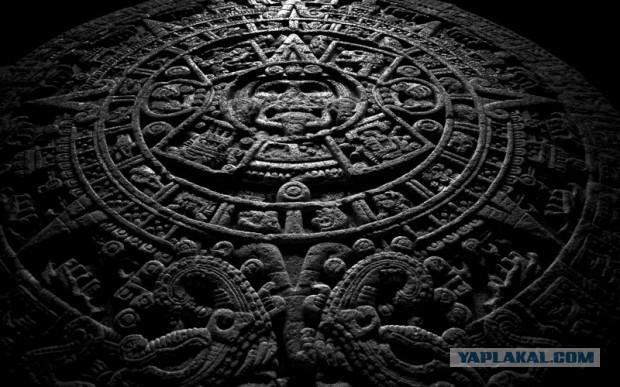
3. The Inca Empire
Inca state, occupies the territory of modern Peru, Argentina, Bolivia, Chile, Colombia and Ecuador, which lasted more than three centuries - since the beginning of XIII-th to the end of XVI-th, when the conquistadors arrived in the country under the Spaniard Francisco Pizarro.
The capital of the Inca empire located in the mountains, on the site of the modern city of Cusco. Due to the unusually high level at the time of the Incas managed to technology to build an effective system of agriculture, turning the slopes into fertile fields and developed technology of irrigation. The highest skill Inca architects evidence survived to our time building the city of Machu Picchu and other facilities. On the basis of astronomical observations and his mathematical system Incas created an accurate calendar, they developed their own writing system, achieved notable successes in medicine and other sciences. Scientists are still scratching their heads, as people do not have the modern tools and devices, managed to build architectural and engineering masterpieces.
Familiarity with European civilization was to the Incas (as for other indigenous peoples of the Americas), a tragedy - a large part of the population was wiped out by European diseases, weapons of conquistadors and start feuds different tribes, and their cities were looted.
Such is the sad fate of the once powerful nation, whose dimensions are comparable with major European and Asian countries, for example, that we call ...

4. The Persian Empire
Persian empire for several centuries was a major player on the world political arena. With its outstanding technology and knowledge, the Persians built on its unique branching and quality network of roads linking the most developed city of the empire, which had not developed a unique system of sewers, created an alphabet and numbers. They were the first to use the assimilation of the conquered peoples, instead of exterminating them, trying to make religious and cultural traditions of foreigners part of their culture, so they managed to create one of the largest and most powerful nations on the planet, such examples in the history of mankind are quite rare, and one of them ... < br />
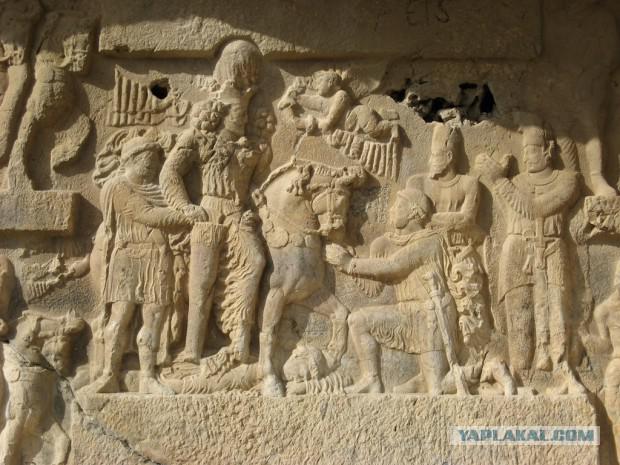
5. The Macedonian Empire
Its existence to the State, by and large, is obliged to one man - Alexander the Great. His empire encompassed part of modern Greece and Egypt, the territory of the former Achaemenid power and part of India. Alexander was able to subdue a lot of countries thanks to his talent commander and a high level of training of the troops. Not the last role in the creation of the empire also played assimilation of the peoples of the occupied territories - marriages between soldiers of the Macedonian army and the representative of the local population.
After the death of Alexander the Great's empire lasted nearly three centuries. As a result of the many conflicts between the heirs of the legendary conqueror country disintegrated and most of it was a part of another great state called ...

6. The Roman Empire
Roman civilization was born in the city-states on the territory of modern Italy, the main of which was, of course, Rome. Empire formed under the strong influence of Greek civilization - the Romans borrowed many ideas from the Greeks state and social structure, they were able to successfully implement, resulting world map appeared one of the greatest empires in the history of mankind. Under the rule of the Caesars disparate regions of Italy were united, and by Roman generals successful young country gradually become the most influential empire of the world, includes modern Italy, Spain, Greece, France, Germany and large parts of the UK, North Africa region (including - Egypt), and large areas in the Middle East.
Victorious march through the world of the Romans prevented the collapse of the empire into western and eastern parts. History of the Western Roman Empire ended in 476, the year, the Eastern Roman Empire, which is also called Byzantine, which lasted nearly a thousand years longer - until 1453 the year.
United Roman Empire was one of the largest states in the history of mankind, it surpassed in size only a few giants, for example ...

7. Mongol Empire
State, covering the most extensive in the history of the adjacent territory, came to light at the behest of the great Mongol commander, whose name became virtually synonymous with successful policy of conquest. History of Genghis Khan's empire lasted a little more than a half century, with the year 1206 on the 1368-th - in this time under the authority of the first Great Khan and his successors were the territory of modern Russia, India, China and some countries in Eastern Europe, with a total area occupied lands was about 33 million km2. The military successes of the Mongols attributed primarily extensive use of cavalry - at their opponents simply had no chance to deal with the countless hordes of skilled horsemen, appearing as if from nowhere and break the infantry to the nines.
Continuation of the policy of conquest of the Mongols kept the death of the Great Khan Ogedei, the third son of Genghis Khan. Who knows - if it was not a coincidence, perhaps, Western Europe would be met with all the "charms" of the Mongol invasion. During the struggle for power several Mongolian political leaders, the empire was divided into four states - the Golden Horde, Ilkhanate in the Middle East, the Yuan Empire in China and the Chagatai ulus in Central Asia.
It is worth noting that the Mongols were not mindless barbarians, what they often try to present their works in Western historians. In the occupied territories are administered fairly humane towards indigenous laws - for example, strictly forbidden to harass the locals for their religious beliefs. Such progressive domestic policy should learn such as the elite of a state like ...

8. Ancient Egypt
Located in the valley of the River Nile State in various forms existed for more than 4 thousand years. Stories of Egyptian civilization devoted countless studies, thousands of books, feature and documentary films, but scientists continue to argue about the technology and knowledge of the ancient Egyptians, which allowed them to create, for example, the famous pyramids of Giza and the other wonders of architectural thought.
The heyday of ancient Egypt is characterized by the highest level of development of the traditional religion of the Egyptian language, medicine, architecture, agricultural technology, mathematics, and various arts. Egypt is among the three oldest countries in the world, among them - the Sumerian civilization and India, the latter is also called ...

9. Harappan civilization
India civilization is not as well known as Ancient Egypt, although both states were formed around the same time - in the middle of the fourth millennium BC. During the existence of civilization, was situated in the territory of present-day Pakistan, covers more than a thousand years.
One of the distinguishing features of the Harappan civilization can be considered a peaceful, constructive policy of the authorities, with both internal and external.
While the rulers of other countries fought wars and intimidated its own citizens, considering the main instrument for strengthening the power of violence, the first person Harappan state all their efforts on the development of society, strengthening the economy and improving technology.
Archaeologists claim that in the course of the study settlements Indian civilization, they found only a small number of weapons, thus completely lacked human remains with signs of violent death that leads to the conclusion about the peaceful state Indies.
Harapptsy lived in a clean, well-planned city with sewage and water systems, almost every house had a bathroom and a toilet. Unfortunately, we know little about the Indian civilization, but the available information indicates that she was one of the most progressive countries of that era.
Friendliness and peacefulness were characterized and the people, to establish a state in the Caribbean - we know it under the name ...

10. Aravaca
Arawak - the collective name of a group of peoples who inhabited the islands of the Caribbean and northern South America. It was the first of the Arawak Indian tribes met with Christopher Columbus on his arrival in the New World. According to various estimates, during the first ekspeditsiiKolumba Island Arawak population ranged from 300 to 400 thousand people, although some sources give different figures - up to several million.
With its advanced culture, the Arawaks were very friendly to each other and to strangers - according to the testimony of participants of the expedition, the Aborigines shouted approaching their island European courts "Tainos!", Which translated from the local dialect means "peace." Hence went second common name Island Arawak tribes - Taino.
Taino engaged in trade, agriculture, fishing and hunting, unlike many other Indian tribes, they almost did not take part in military conflicts. The only people with whom feuded Arawaks were cannibals who lived on the territory of the modern state of Puerto Rico.
Arawakan civilization characterized by a highly organized structure of society, its hierarchy, as well as a commitment to universal values of the population - for example, the Arawak women have the right to refuse a man in a marriage that was unheard of for the Indians, however, like many Europeans of the time.
With the arrival of the conquerors State Arawak quickly fell into disrepair - the population declined at times due to lack of immunity to diseases of the Old World and the armed conflict with the Spaniards. Currently Taino considered extinct, although on some islands of the Caribbean culture remnants of this once highly developed civilization.
©
here
PS: about the USSR occupied comments)

1. Olmec civilization
The Olmecs - one of the oldest civilizations of Central America, with an outstanding culture and unusually high for that time the level of development of science and technology.
"Card" are considered Olmec giant sculpture in the form of heads, located in modern Mexico. The flowering of Olmec States fell on the period between 1500 m and 400-m years BC, according to historians, this nation has achieved impressive success in architecture, agriculture, medicine, literature and other fields of knowledge. In Olmec had a pretty accurate calendar and a mathematical system in which the digits are "0", which can be considered a breakthrough.
Having existed for over a thousand years, the Olmec civilization for unclear reasons still declined, but on its ruins have other states, such as ...

2. Aztec Empire
"Golden age" of the Aztec civilization is the period between the 1428th and 1521st years - at this time the empire covers a huge territory, where, according to some estimates, about 5 million people, while the population of its capital, Tenochtitlan, was situated on the site of the modern Mexico City is about 200 thousand.
Aztecs much borrowed from the Olmec civilization, including - religious beliefs, ritual games, traditions of human sacrifice, language, calendar, and some of the achievements of science and culture. The Aztec Empire was one of the richest and most highly developed countries of pre-Columbian America - enough to mention even the most complex of them built the aqueduct, intended for irrigation of the famous floating gardens.
With the exclusion of the Aztec state from the rest of the world, and along with the state itself, was over, when the detachment of Spanish conquistador Hernan Cortes was allowed entry into Tenochtitlan. You can imagine the surprise of the Spaniards, is expected to meet with the "primitive barbarians" - their eyes appeared a huge rich city with wide streets and a stunningly beautiful architecture.
Probably, greed, envy Spaniards to wealth citizens, as well as European diseases and modern weapons and conquistadors led to the destruction of the Aztec state and the genocide of a great people, and just a few years has fallen victim to the European invaders of other Indian civilization ...

3. The Inca Empire
Inca state, occupies the territory of modern Peru, Argentina, Bolivia, Chile, Colombia and Ecuador, which lasted more than three centuries - since the beginning of XIII-th to the end of XVI-th, when the conquistadors arrived in the country under the Spaniard Francisco Pizarro.
The capital of the Inca empire located in the mountains, on the site of the modern city of Cusco. Due to the unusually high level at the time of the Incas managed to technology to build an effective system of agriculture, turning the slopes into fertile fields and developed technology of irrigation. The highest skill Inca architects evidence survived to our time building the city of Machu Picchu and other facilities. On the basis of astronomical observations and his mathematical system Incas created an accurate calendar, they developed their own writing system, achieved notable successes in medicine and other sciences. Scientists are still scratching their heads, as people do not have the modern tools and devices, managed to build architectural and engineering masterpieces.
Familiarity with European civilization was to the Incas (as for other indigenous peoples of the Americas), a tragedy - a large part of the population was wiped out by European diseases, weapons of conquistadors and start feuds different tribes, and their cities were looted.
Such is the sad fate of the once powerful nation, whose dimensions are comparable with major European and Asian countries, for example, that we call ...

4. The Persian Empire
Persian empire for several centuries was a major player on the world political arena. With its outstanding technology and knowledge, the Persians built on its unique branching and quality network of roads linking the most developed city of the empire, which had not developed a unique system of sewers, created an alphabet and numbers. They were the first to use the assimilation of the conquered peoples, instead of exterminating them, trying to make religious and cultural traditions of foreigners part of their culture, so they managed to create one of the largest and most powerful nations on the planet, such examples in the history of mankind are quite rare, and one of them ... < br />

5. The Macedonian Empire
Its existence to the State, by and large, is obliged to one man - Alexander the Great. His empire encompassed part of modern Greece and Egypt, the territory of the former Achaemenid power and part of India. Alexander was able to subdue a lot of countries thanks to his talent commander and a high level of training of the troops. Not the last role in the creation of the empire also played assimilation of the peoples of the occupied territories - marriages between soldiers of the Macedonian army and the representative of the local population.
After the death of Alexander the Great's empire lasted nearly three centuries. As a result of the many conflicts between the heirs of the legendary conqueror country disintegrated and most of it was a part of another great state called ...

6. The Roman Empire
Roman civilization was born in the city-states on the territory of modern Italy, the main of which was, of course, Rome. Empire formed under the strong influence of Greek civilization - the Romans borrowed many ideas from the Greeks state and social structure, they were able to successfully implement, resulting world map appeared one of the greatest empires in the history of mankind. Under the rule of the Caesars disparate regions of Italy were united, and by Roman generals successful young country gradually become the most influential empire of the world, includes modern Italy, Spain, Greece, France, Germany and large parts of the UK, North Africa region (including - Egypt), and large areas in the Middle East.
Victorious march through the world of the Romans prevented the collapse of the empire into western and eastern parts. History of the Western Roman Empire ended in 476, the year, the Eastern Roman Empire, which is also called Byzantine, which lasted nearly a thousand years longer - until 1453 the year.
United Roman Empire was one of the largest states in the history of mankind, it surpassed in size only a few giants, for example ...

7. Mongol Empire
State, covering the most extensive in the history of the adjacent territory, came to light at the behest of the great Mongol commander, whose name became virtually synonymous with successful policy of conquest. History of Genghis Khan's empire lasted a little more than a half century, with the year 1206 on the 1368-th - in this time under the authority of the first Great Khan and his successors were the territory of modern Russia, India, China and some countries in Eastern Europe, with a total area occupied lands was about 33 million km2. The military successes of the Mongols attributed primarily extensive use of cavalry - at their opponents simply had no chance to deal with the countless hordes of skilled horsemen, appearing as if from nowhere and break the infantry to the nines.
Continuation of the policy of conquest of the Mongols kept the death of the Great Khan Ogedei, the third son of Genghis Khan. Who knows - if it was not a coincidence, perhaps, Western Europe would be met with all the "charms" of the Mongol invasion. During the struggle for power several Mongolian political leaders, the empire was divided into four states - the Golden Horde, Ilkhanate in the Middle East, the Yuan Empire in China and the Chagatai ulus in Central Asia.
It is worth noting that the Mongols were not mindless barbarians, what they often try to present their works in Western historians. In the occupied territories are administered fairly humane towards indigenous laws - for example, strictly forbidden to harass the locals for their religious beliefs. Such progressive domestic policy should learn such as the elite of a state like ...

8. Ancient Egypt
Located in the valley of the River Nile State in various forms existed for more than 4 thousand years. Stories of Egyptian civilization devoted countless studies, thousands of books, feature and documentary films, but scientists continue to argue about the technology and knowledge of the ancient Egyptians, which allowed them to create, for example, the famous pyramids of Giza and the other wonders of architectural thought.
The heyday of ancient Egypt is characterized by the highest level of development of the traditional religion of the Egyptian language, medicine, architecture, agricultural technology, mathematics, and various arts. Egypt is among the three oldest countries in the world, among them - the Sumerian civilization and India, the latter is also called ...

9. Harappan civilization
India civilization is not as well known as Ancient Egypt, although both states were formed around the same time - in the middle of the fourth millennium BC. During the existence of civilization, was situated in the territory of present-day Pakistan, covers more than a thousand years.
One of the distinguishing features of the Harappan civilization can be considered a peaceful, constructive policy of the authorities, with both internal and external.
While the rulers of other countries fought wars and intimidated its own citizens, considering the main instrument for strengthening the power of violence, the first person Harappan state all their efforts on the development of society, strengthening the economy and improving technology.
Archaeologists claim that in the course of the study settlements Indian civilization, they found only a small number of weapons, thus completely lacked human remains with signs of violent death that leads to the conclusion about the peaceful state Indies.
Harapptsy lived in a clean, well-planned city with sewage and water systems, almost every house had a bathroom and a toilet. Unfortunately, we know little about the Indian civilization, but the available information indicates that she was one of the most progressive countries of that era.
Friendliness and peacefulness were characterized and the people, to establish a state in the Caribbean - we know it under the name ...

10. Aravaca
Arawak - the collective name of a group of peoples who inhabited the islands of the Caribbean and northern South America. It was the first of the Arawak Indian tribes met with Christopher Columbus on his arrival in the New World. According to various estimates, during the first ekspeditsiiKolumba Island Arawak population ranged from 300 to 400 thousand people, although some sources give different figures - up to several million.
With its advanced culture, the Arawaks were very friendly to each other and to strangers - according to the testimony of participants of the expedition, the Aborigines shouted approaching their island European courts "Tainos!", Which translated from the local dialect means "peace." Hence went second common name Island Arawak tribes - Taino.
Taino engaged in trade, agriculture, fishing and hunting, unlike many other Indian tribes, they almost did not take part in military conflicts. The only people with whom feuded Arawaks were cannibals who lived on the territory of the modern state of Puerto Rico.
Arawakan civilization characterized by a highly organized structure of society, its hierarchy, as well as a commitment to universal values of the population - for example, the Arawak women have the right to refuse a man in a marriage that was unheard of for the Indians, however, like many Europeans of the time.
With the arrival of the conquerors State Arawak quickly fell into disrepair - the population declined at times due to lack of immunity to diseases of the Old World and the armed conflict with the Spaniards. Currently Taino considered extinct, although on some islands of the Caribbean culture remnants of this once highly developed civilization.
©
here
PS: about the USSR occupied comments)
